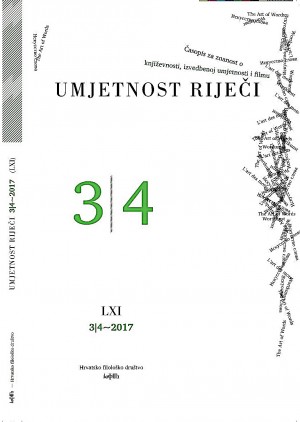KAKO ZVUČI I IZGLEDA DOSTOEVSKIJ (I ŠTO TO MOŽE ZNAČITI ZA ZNANOST O KNJIŽEVNOSTI)
HOW DOES DOSTOEVSKY SOUND AND LOOK (AND HOW COULD THAT BE RELEVANT TO CONTEMPORARY LITERARY STUDIES)
Author(s): Blaž PodlesnikSubject(s): Semiotics / Semiology, Russian Literature, Hermeneutics, Theory of Literature
Published by: Hrvatsko filološko društvo
Keywords: Dostoevsky; literary text; subject-object cognition; discourse; verbal icon;
Summary/Abstract: The paper confronts two dominant scholarly readings of Dostoevsky in order to re-examine the role that textual analysis plays in contemporary literary studies. In Bakhtin’s reading of Dostoevsky, the main focus is on confronting different voices, perspectives, and valuation accents. The incoherence and polyphony of different discourses are considered as the author’s main literary innovation. In more recent studies, the focus has shifted to the author’s philosophical and religious views, conveyed in a complex literary verbal icon. Instead of choosing one of the two approaches in analysing the role of literary text in Dostoevsky’s works, the paper highlights the interdependence of both aspects as the main feature of his literary writing. The paper shows how crucial this duality is for constitution of Dostoevsky’s literary heroes and for the author himself, and points out this duality as the objective invariant of Dostoevsky’s literary oeuvre. Such an analysis can also shed light on the issues contemporary literary studies encounter in their attempt to make sense of the category of literary text and answer the question of the extent to which literary text can still be the subject of scientific (subject-object) cognition.
Journal: Umjetnost riječi
- Issue Year: 2020
- Issue No: 3-4
- Page Range: 229-244
- Page Count: 16
- Language: Croatian

